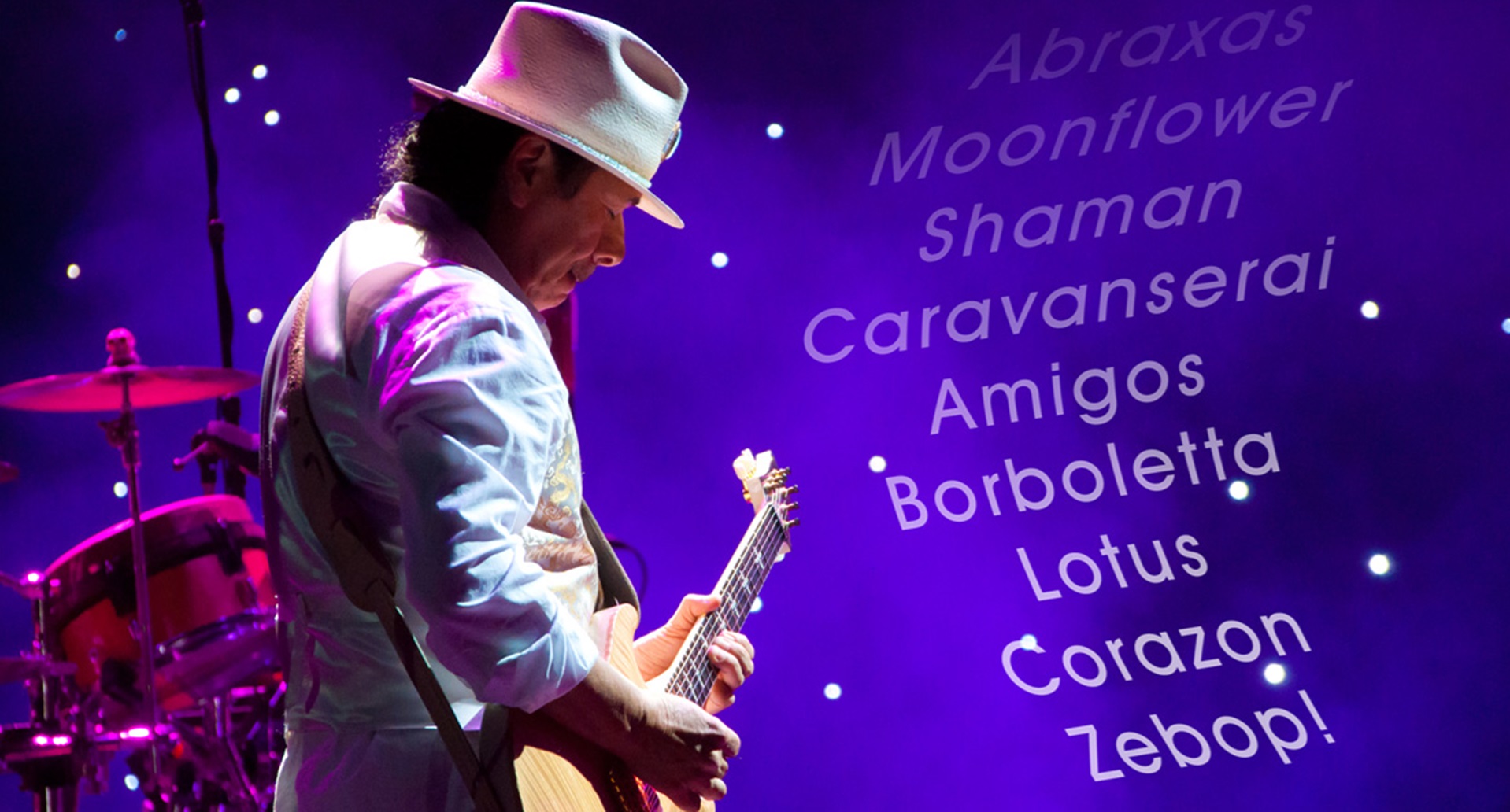Carlos Santana is considered by many to be one of the top guitarists in modern history. The winner of 10 Grammy Awards as well as three Latin Grammys, Rolling Stone magazine has ranked Santana at No. 20 on its list of 100 greatest guitarists of all time.
During his career, Santana and/or his namesake band have released 26 studio albums, 7 live albums, and 23 compilation albums, some of which have unique and unusual names. Where did Santana get his inspiration for some of these titles?
A Literary and Musical Classic
Abraxas was released on September 23, 1970, when Carlos Santana was only 23 years old. The album took its name from a line from Demian, the literary masterpiece written and published in 1919 by German author Herman Hesse. During this period in Hesse’s life he was undergoing therapy from an associate of the famous psychologist, Carl Jung. It was the beginning of the author’s turning to the “inward way”, as well as his discovery of “magical thinking”.
This line, taken from Hesse’s Demian, is the inspiration for the title of Santana’s second album…”we questioned the painting, berated it, made love to it, prayed to it: We called it mother, we call it whore and slut, called it our beloved, called it Abraxas…”
In Jungian theory, Abraxas represents a being higher than God, something utterly unattainable and impossible to conceptualize, which, according to Santana, is exactly what the album was meant to be, a combining of spirituality and psychedelia, the music full of spirit, sexuality, and soul taking its roots from the percussive sounds of Afro-Caribbean music.
Fusing Genres
Santana’s fourth album was released during a period of transition for the band. Caravanserai is a spiritual blend of jazz, rock, and Latin music, and is considered by many to be the best album made during this period of transition for the band.
The word, “caravanserai” in the Near East means a large courtyard that provides accommodations for traveling caravans. However, Carlos Santana found a different meaning for the term while he was reading a text written by the Indian yogi and guru, Paramahansa Yogananda, “The caravan is the eternal cycle of reincarnation, every soul going into and out of life, from death to life and back again, until you arrive at a place where you can rest and achieve inner peace. That place is the caravanserai.”
According to Santana, this was a most fitting title for this album because it not only represented the personal quest for spirituality that he had embarked upon, but the music created by a band in transition for the album.
Another Stage in the Process
Carlos Santana released his sixth studio album Borboletta in 1974. Borboletta is Portuguese for “butterfly,” as is evident on the beautiful album cover designed by Carlos Santana in collaboration with Ed Lee and Barry Imhoff. In the early ‘70s, Carlos Santana was evolving, both musically and spiritually. The title is a reflection of his “metamorphosis,” but is also a “shout-out” to the contributions of Brazilian musicians Flora Purim and Airto Moreira, significant influences to the music on this album, a combination of jazz-funk-fusion, on this album.


